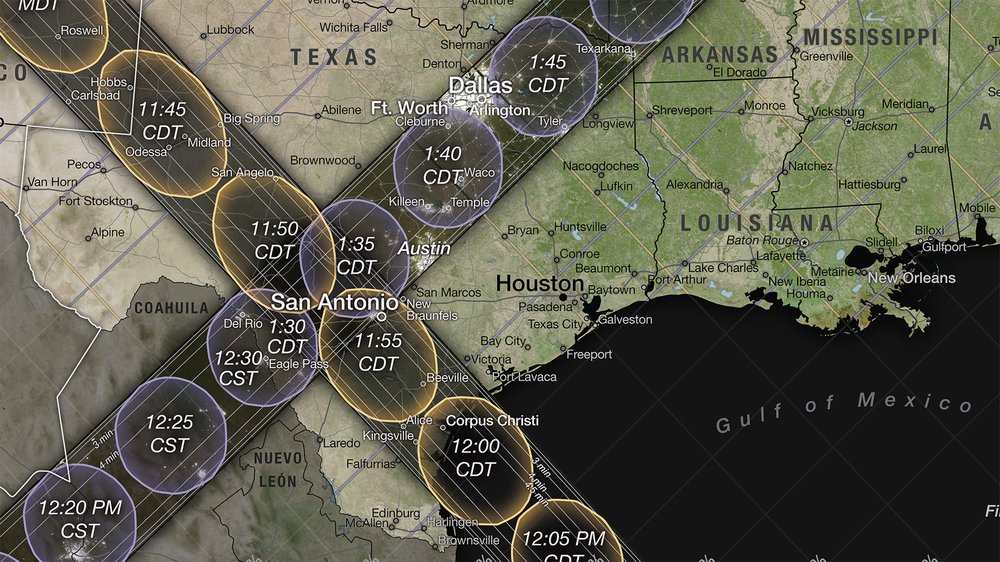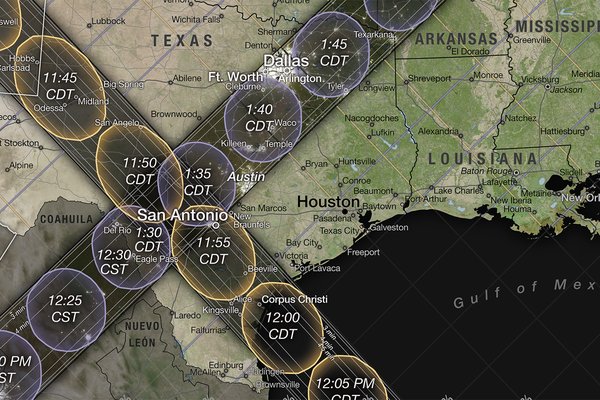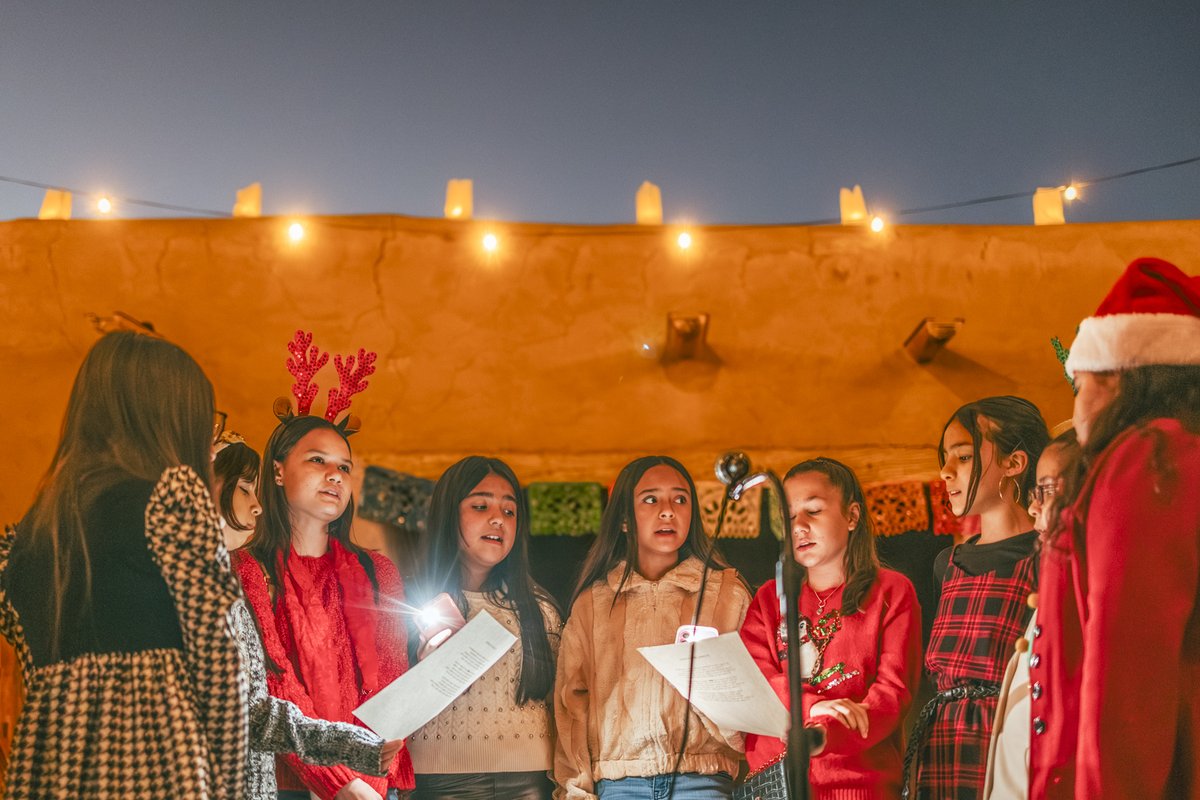When Johnny Cash sang about a burning ring of fire, he wasn’t talking about a solar eclipse — but that’s exactly what we’ll see above Texas on Saturday, Oct. 14. Most of us will see the moon creeping across the sun, creating a partial solar eclipse. But along a line from Monahans Sandhills to Mustang Island, observers will see a ring of fire.
A solar eclipse occurs when the sun, moon and Earth are lined up in space and the moon moves in front of the sun. October’s eclipse is an annular eclipse, which means the moon is covering the sun at the furthest point in its elliptical orbit. Because it’s so far away, the moon does not completely cover the sun, as in a total solar eclipse. In April, Texas will experience the heightened drama of a total eclipse.
Totality, the point of greatest eclipse, will start just before noon and last up to four minutes. Residents of Odessa, Midland, San Angelo, San Antonio and Corpus Christi are all in the zone of totality. The rest of the state will see a partial solar eclipse.
“Many of your state parks and natural areas are ideally located for viewing the annular eclipse,” says Nic Maloukis, superintendent of Government Canyon State Natural Area in San Antonio.
He recommends making reservations for both campsites and day passes in advance (campsites can be reserved five months in advance, and day passes one month in advance). For parks in totality, there won’t be any space for folks without reservations. Plan to arrive early and stay after the eclipse to avoid traffic delays.
When choosing a location to view the eclipse, think about what you want out of the experience. Do you want to be perched on a sand dune as the ring of fire emerges? Consider Monahans Sandhills State Park in West Texas, which has a good chance of cloudless skies. If you’d rather be on the water, try Lake Corpus Christi or Choke Canyon state parks. Hikers might want to trek to an overlook to watch the eclipse. Kickapoo Cavern State Park and Garner State Park feature trails with great views of the sky.
Even though most of the sun will be hidden behind the moon, it’s never safe to look directly at an annular or a partial eclipse. Find eclipse glasses labeled with the ISO-12312-2 certification, which means they’re approved for eye protection. Use them to enjoy October’s annular eclipse and hang on to them for the Great North American Eclipse on April 8, 2024.





